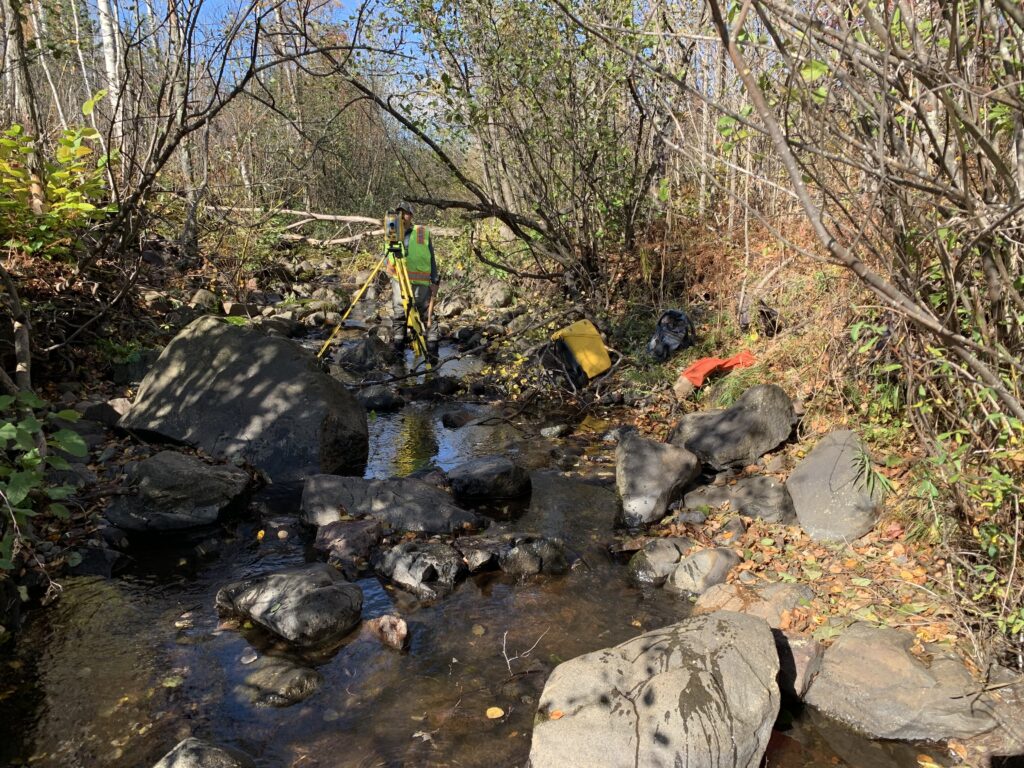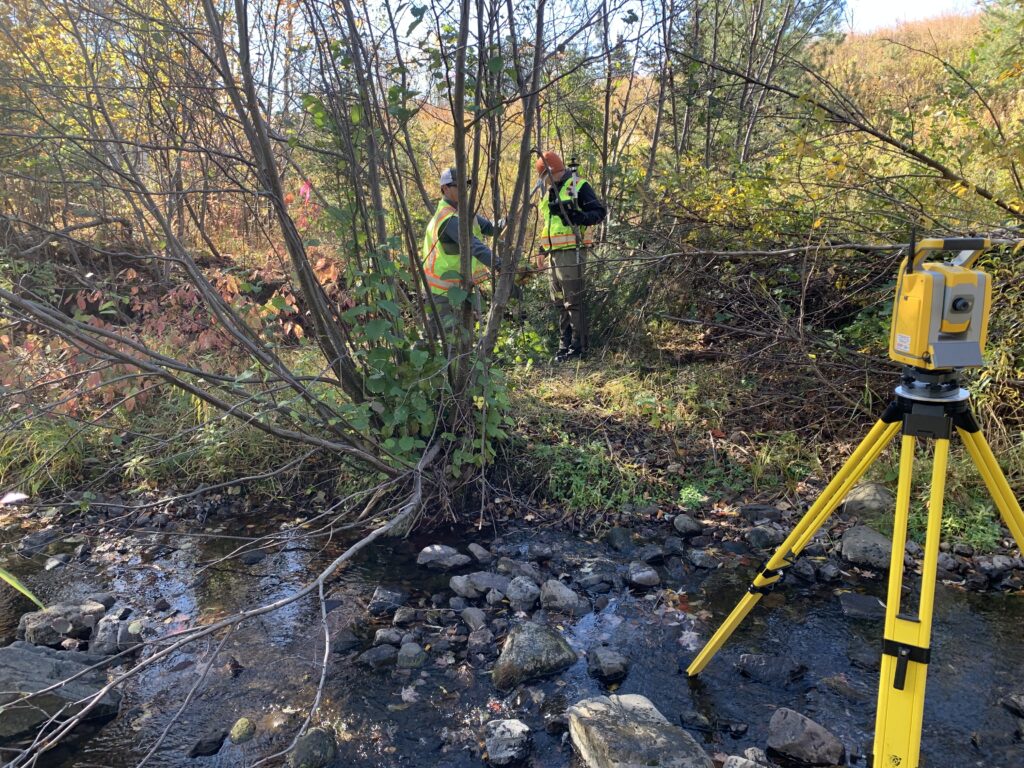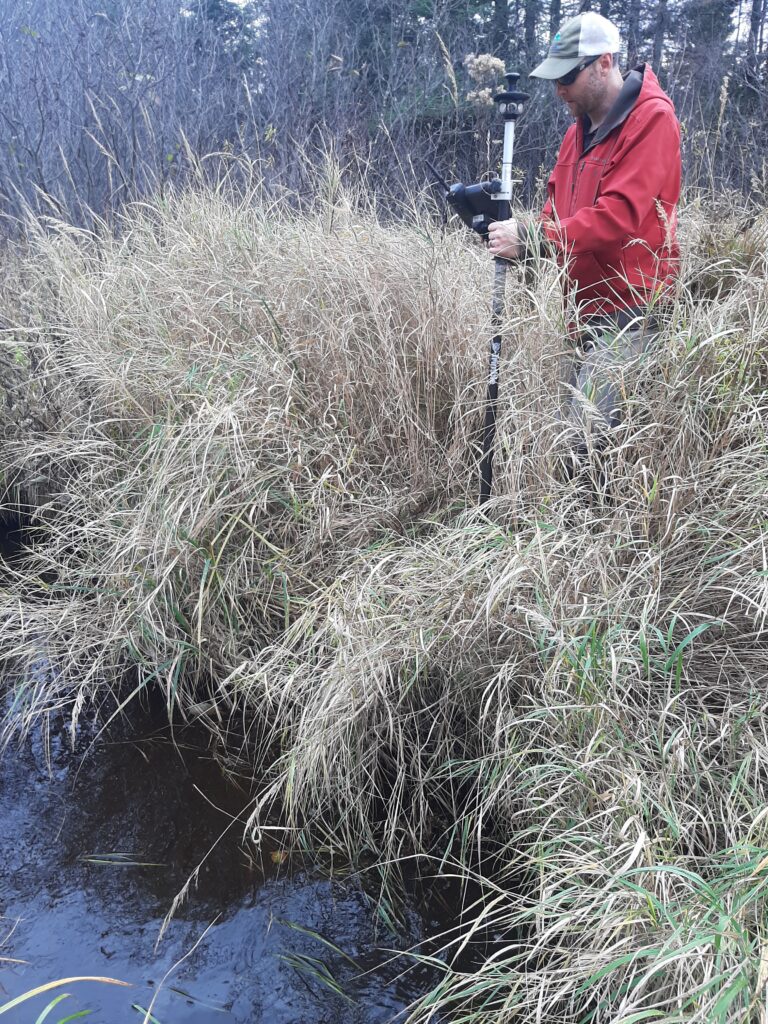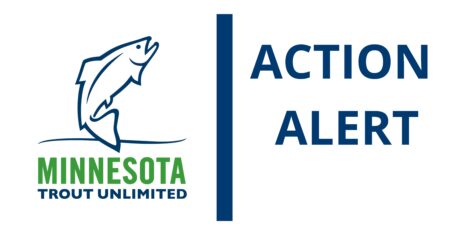The science of stream restoration: What is fluvial geomorphology and how does it influence what we do?

(Photo: Tim Beaster, SSL-SWCD)
By Dr. Jennifer Biederman, Habitat Director
Stream restoration has come a long way from the days of simply lining banks with riprap or other artificial structures to control erosion and stabilize banks. While well-intentioned, these methods sometimes led to unintended consequences, like disrupting the stream’s natural flow or harming aquatic habitats. Today, the science of stream restoration embraces geomorphology, the study of Earth’s surface features and the processes that shape them, to design channels that work with nature, not against it. In recent years, this approach has been systematized to incorporate hydrologic principles, to what is known as natural channel design.
Taking cues from both geomorphology and hydrology, natural channel design develops a “blueprint” for a segment of stream (or stream “reach”) that is based upon a stream’s natural patterns and profiles to create sustainable restoration.
- Pattern refers to the way the stream appears from above – as if you were looking at it from an airplane window. Is its pattern straight, meandering, or braided? This pattern is influenced by factors like slope of the landscape, the amount of sediment it must move (called “sediment load”), and what the bank material is made of. For instance, meandering streams have a sinuous form with lots of bends and curves, while braided streams consist of multiple interweaving channels separated by sediment bars.
- Profile describes the slope of the streambed from its source to its mouth. It illustrates how the elevation changes along the course of the stream. Typically, a stream has a steeper gradient near its source, which gradually decreases as it approaches its mouth. This longitudinal profile is critical for understanding the energy and erosive power of the stream at various points along its course.
It can be challenging to understand what a degraded stream, incised by legacy sediments, perhaps channelized or ditched, “should” look like in terms of pattern and profile. To figure this out, stream restoration professionals – typically trained engineers – will look at “reference reaches” or healthy, minimally degraded streams nearby with similar geological and hydrological attributes – to guide how a degraded stream should be restored. The work involves a great deal of time in the field – measuring variables at the watershed scale (e.g. width and slope of the valley), river scale (e.g. bankfull discharge, bedload sediment size), and reach scale (e.g. flow hydraulics, channel dimension, pattern and profile). All the data inform the design– which is developed through several field visits with DNR, MNTU, design engineers, and other agency partners. Ultimately, the design must be approved by DNR hydrologists during a permitting process.
By studying a stream’s geomorphology, MNTU restoration projects aim to recreate the natural meanders, riffles, and pools that support diverse ecosystems and habitat. This means using materials like logs and strategically placed rocks to mimic natural structures, enhancing habitat complexity and promoting ecological balance. By aligning restoration efforts with the inherent dynamics of streams, we not only address erosion and sedimentation issues but also create resilient ecosystems capable of supporting robust fish populations.
Engineer Keith Anderson, PE, of Beaver River Consulting has been involved with stream restoration in Minnesota for nearly two decades and engineered stream restoration designs on North Shore rivers, including MNTU projects. Anderson has witnessed the rapid advancement of the science of stream restoration. According to Anderson, “With improved understanding of geomorphic principles and stream science restoration has advanced in ways that improve long term sustainable self-maintaining stream designs. By working with nature and the tendencies for stream systems to interact with their floodplains in a dynamic way the stream designs utilizing these techniques will create better trout habitat and therefore better fishing into the future.” One important takeaway is that the science of stream restoration is still in its infancy. While stream practitioners do their best to mimic nature amidst considerable constraints, human engineered features such as roads, bridges, and buildings – may be prone to some shortfalls. These provide opportunities to learn and improve.ridges, buildings, or streams – may be prone to some shortfalls, which provide opportunities to learn and improve.

Caption: SSL-SWCD staff doing pre-project geomorphological surveys at Amity Creek in Duluth. These data will be used to inform the design of the Amity Creek restoration project – a collaborative project involving SSL-SWCD and MNTU. (Photo: Tim Beaster, SSL-SWCD)

Caption: Engineering staff surveying the Sucker River as a reference reach for a project on Keene Creek in Hermantown. These data will be used to inform the design of a upper Keene Creek restoration project – a collaborative project involving SSL-SWCD and MNTU. (Photo: Andy Kasun, SSL-SWCD)


